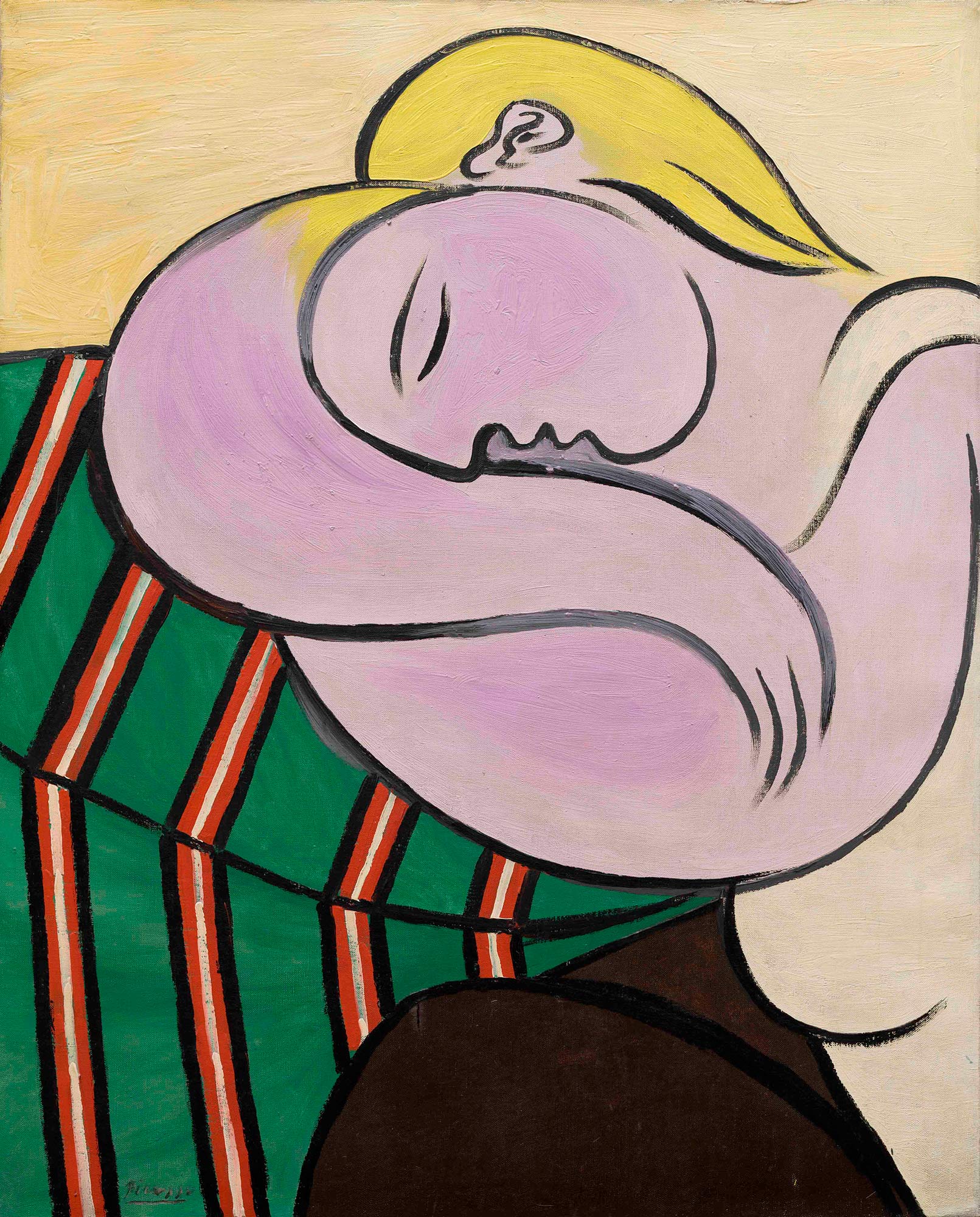
Woman with Yellow Hair, 1931
“We all know that art is not truth. Art is a lie that makes us realize truth, at least the truth that is given us to understand.” [1]
Pablo Picasso (1881–1973) is considered the most influential artist of the 20th century, and his lifelong creative invention repeatedly changed the course of the History of Art.
He was born in 1881 in Malaga and moved to Barcelona in 1895 to enroll in the Fine Art Academy. His father was a painter, teacher, and museum curator, and a major influence in Picasso’s formative years as an artist. In 1900, he visited Paris for the first time, soaking up the café culture and nightlife of the bohemian arts capital. Soon after, Picasso settled in Paris, where intriguing tales about friendships, collaborations, and rivalries with other famous creators, such as writer Gertrude Stein, composer Igor Stravinsky, and artist Henri Matisse, began to surface. To this day, the public still devours stories about Picasso’s relationships with his wives and long-term companions, who served as models and muses for his art.
His style developed from the “Blue Period” (1901–04), characterized by its predominantly blue tones, melancholy themes, and forlorn characters, to the “Rose Period” (1905), with a brighter, more naturalistic palette and subjects of circus and carnival performers in intimate settings, to the pivotal work, Les Demoiselles d’Avignon (1906–07). Les Demoiselles redefined the genre of the classical nude by incorporating indigenous art influences, such as African and Oceanic sculpture. Through this painting, Picasso set the stage for Cubism. A revolutionary system of painting, Cubism shows multiple views of the same object simultaneously on the two-dimensional picture plane and was a bold, new language.
Picasso continued to work prolifically until his death in 1973 at the age of 92. During his 80-year career, Picasso produced roughly 50,000 works of art, ranging from paintings and sculpture to ceramics and drawings.
Picasso met Marie-Thérèse Walter, the subject of this portrait, in 1927 when she was 17 years old. They began an intense love affair, but concealed it from the public for many years as she was a teenager and the artist was married. However, Picasso documented their early years together, albeit cryptically, by including the monograms “MT” and “MTP” in his still lifes and portraits of the time.
By 1931, Marie-Thérèse’s voluptuous body and blond hair were explicitly referenced in works such as Woman with Yellow Hair. Marie-Thérèse became a muse and constant subject for Picasso. He portrayed her reading, gazing into a mirror, and sleeping, the most intimate of depictions. A single, curved line delineating Marie-Thérèse’s profile became an emblem and appears in numerous sculptures, prints, and paintings. The photographer Brassaï visited Picasso’s studio in 1933 and commented on the classical and undulating character of the majority of works he found there: “He opened the door to one of those immense naves, and we could see, radiant in white, a city of sculptures…I was astonished by the roundness of all these forms. A new woman had entered Picasso’s life: Marie-Thérèse Walter.”[2] This painting is less a portrait than an homage to his young mistress.
Although painted nearly 20 years after the artist’s initial experimentation with Cubism, Picasso’s simplification of Marie-Thérèse’s voluptuous figure into primary shapes can be traced back to that painterly technique. The undulating lines, rounded organic shapes, and saturated hues attest to the artist’s appreciation of contemporary developments in painting such as Surrealism. Picasso was influenced by their investigation into dreams as a portal to the subconscious, and the bright, playful colors he has chosen for this portrait may represent dream imagery.
Preguntas
Show your students Woman with Yellow Hair, 1931 and ask them: How is this portrait a departure from traditional portraits that you have seen? Take the pose of the woman in this painting. Describe how it feels.
Do you think the artist knew this woman? What do you see in this painting that supports your ideas?
How would you feel about someone painting you while you had your eyes closed? What might Marie-Thérèse have said to Picasso about her portrait? In your opinion, would she have approved of the finished portrait?
Describe the colors in this painting. How might the impact of the painting change if Picasso had used a darker palette for the figure? If you were to paint a portrait of someone very close to you, how would you use colors to express your feelings about this person?
